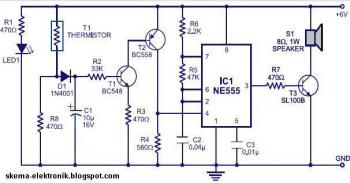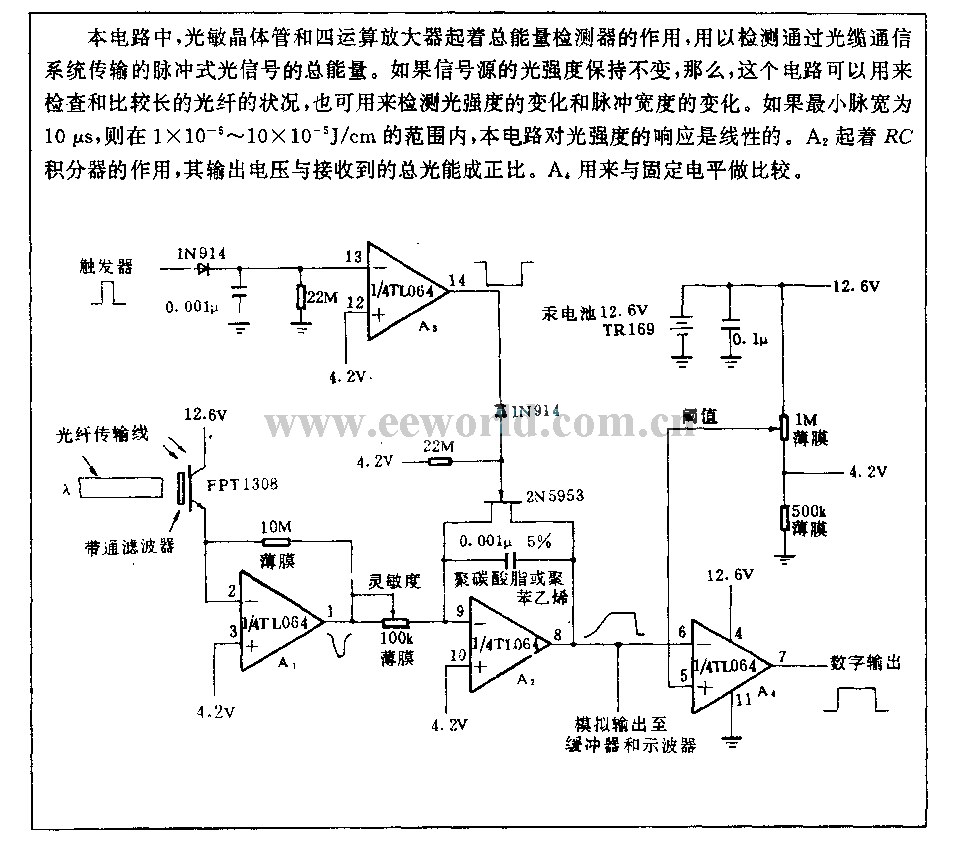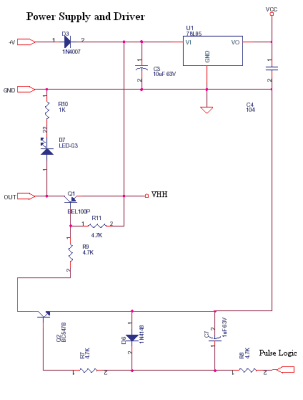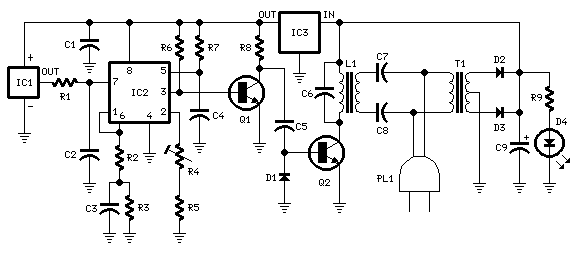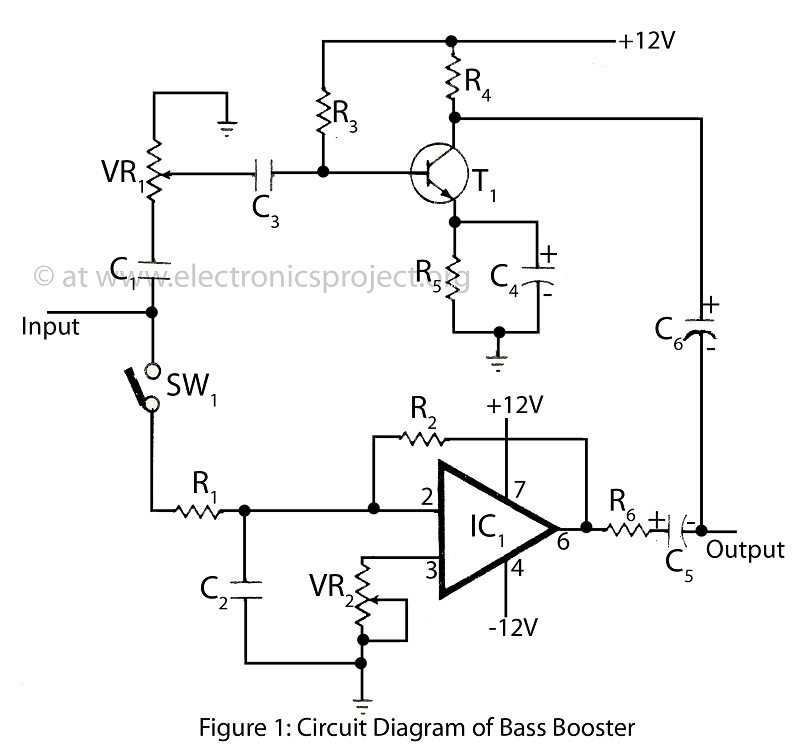
Headphone Amplifier Circuit
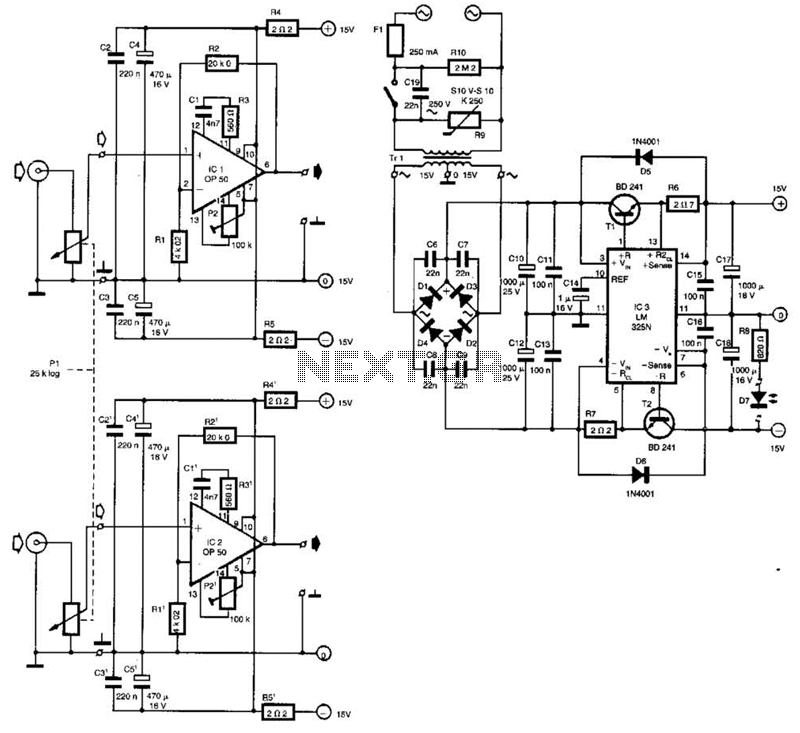
Built around Precision Monolithics Inc. OP-50 operational amplifiers, this amplifier is capable of driving 100- to 14-ohm headphones. It maintains a flat frequency response within 0.4 dB from 10 Hz to 20 kHz and exhibits a total harmonic distortion (THD) of less than 0.01% across most of the audio range. The amplification factor is approximately 6X.
The described amplifier utilizes Precision Monolithics Inc. OP-50 operational amplifiers, renowned for their high performance in audio applications. The design is optimized to drive headphones with impedances ranging from 14 to 100 ohms, making it versatile for various headphone models. The flat frequency response of 0.4 dB from 10 Hz to 20 kHz ensures that the amplifier reproduces audio signals accurately, preserving the integrity of the sound without coloration across the audible spectrum.
The total harmonic distortion (THD) of less than 0.01% indicates that the amplifier delivers a clean audio signal with minimal distortion, enhancing the listening experience, especially in high-fidelity audio systems. The amplification factor of approximately 6X allows for significant volume increase, making it suitable for driving headphones that require higher power levels to achieve optimal performance.
In terms of circuit design, the OP-50 op-amps are configured in a feedback loop to achieve the desired gain and frequency response. Additional components such as resistors and capacitors are likely employed to stabilize the circuit and filter out unwanted noise, ensuring that the amplifier operates efficiently and reliably. Power supply decoupling capacitors may also be included to maintain stable operation under varying load conditions, further contributing to the amplifier’s overall performance.
This amplifier design exemplifies a high-quality approach to audio amplification, suitable for audiophiles and professionals seeking precision in sound reproduction. Built arouud Precision Monolithics Inc. OP-50 op amps, this amplifier will drive 100- to 14 headphone, is flat within 0.4 dB from 10 Hz to 20 kHz, and has a THD of less than 0.01% over most of the audio range. Amplification factor is about 6X. 🔗 External reference
The described amplifier utilizes Precision Monolithics Inc. OP-50 operational amplifiers, renowned for their high performance in audio applications. The design is optimized to drive headphones with impedances ranging from 14 to 100 ohms, making it versatile for various headphone models. The flat frequency response of 0.4 dB from 10 Hz to 20 kHz ensures that the amplifier reproduces audio signals accurately, preserving the integrity of the sound without coloration across the audible spectrum.
The total harmonic distortion (THD) of less than 0.01% indicates that the amplifier delivers a clean audio signal with minimal distortion, enhancing the listening experience, especially in high-fidelity audio systems. The amplification factor of approximately 6X allows for significant volume increase, making it suitable for driving headphones that require higher power levels to achieve optimal performance.
In terms of circuit design, the OP-50 op-amps are configured in a feedback loop to achieve the desired gain and frequency response. Additional components such as resistors and capacitors are likely employed to stabilize the circuit and filter out unwanted noise, ensuring that the amplifier operates efficiently and reliably. Power supply decoupling capacitors may also be included to maintain stable operation under varying load conditions, further contributing to the amplifier’s overall performance.
This amplifier design exemplifies a high-quality approach to audio amplification, suitable for audiophiles and professionals seeking precision in sound reproduction. Built arouud Precision Monolithics Inc. OP-50 op amps, this amplifier will drive 100- to 14 headphone, is flat within 0.4 dB from 10 Hz to 20 kHz, and has a THD of less than 0.01% over most of the audio range. Amplification factor is about 6X. 🔗 External reference

